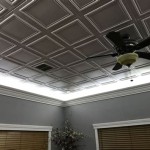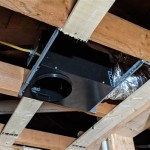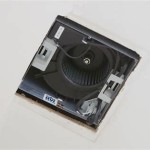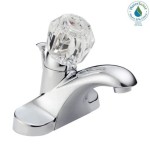Bathroom Extractor Fan Flat Roof Vents
Effective ventilation is crucial for any bathroom, preventing moisture buildup that can lead to mold, mildew, and structural damage. For bathrooms with flat roofs, selecting the right extractor fan and vent system requires careful consideration. This article explores the key aspects of bathroom extractor fan flat roof vents, offering guidance on choosing and installing a system to maintain a healthy and comfortable bathroom environment.
Choosing the Right Extractor Fan
Extractor fans are rated by their extraction rate, measured in cubic meters per hour (m³/h). Selecting the correct extraction rate depends on the bathroom's size and usage. Larger bathrooms or those with showers or baths require higher extraction rates. Building regulations often specify minimum extraction rates, and consulting these regulations is advisable before purchasing a fan.
Various types of extractor fans exist, including axial, centrifugal, and inline fans. Axial fans are commonly used in domestic settings due to their affordability and ease of installation. Centrifugal fans offer higher pressure and are more suitable for longer duct runs. Inline fans are installed within the ductwork itself and are ideal for situations where space is limited within the bathroom.
Noise levels should also be considered. Quieter fans contribute to a more relaxing bathroom environment. Fan specifications usually include a sound level rating, allowing for comparison and selection of a quieter model. Consider fans with timers or humidity sensors for automated operation and enhanced moisture control.
Flat Roof Vent Options
Several vent options are suitable for flat roofs. Low-profile vents are designed to minimize visual impact while providing adequate airflow. These vents often incorporate a gravel guard to prevent debris from blocking the airflow and provide a weatherproof seal.
Mushroom vents, also known as cupola vents, are another option. These vents are designed to create an upward draft, promoting efficient air extraction. They are typically more visible than low-profile vents but can offer improved ventilation performance in certain situations.
Pipe vents, consisting of a simple pipe extending vertically from the roof, are a cost-effective option. However, they can be more susceptible to wind-driven rain and may require additional weatherproofing measures.
Installation Considerations for Flat Roof Vents
Correct installation is essential for optimal performance and to prevent leaks. Professional installation is recommended, especially for complex roof structures or when working at height. However, competent DIY enthusiasts can install some systems following manufacturer instructions and local building regulations.
The ductwork connecting the extractor fan to the roof vent should be as short and straight as possible to minimize airflow resistance. Insulating the ductwork helps prevent condensation and reduces noise levels. Securely sealing all joints and connections prevents air leakage and ensures efficient extraction.
When installing a vent on a flat roof, ensuring a proper weatherproof seal is paramount. Using appropriate sealant and flashing around the vent penetration prevents water ingress and protects the roof from damage.
Maintenance and Cleaning
Regular maintenance is crucial for maintaining the effectiveness of the extractor fan and vent system. Dust and debris can accumulate on the fan blades and within the vent, reducing airflow and potentially causing the motor to overheat. Cleaning the fan blades and vent regularly with a damp cloth or vacuum cleaner helps maintain optimal performance.
Inspecting the ductwork for leaks or blockages should also be part of a regular maintenance routine. Addressing any issues promptly prevents further damage and ensures the system operates efficiently. Regularly checking the vent for debris and clearing any obstructions helps maintain proper airflow.
Building Regulations and Ventilation Standards
Building regulations typically stipulate minimum ventilation requirements for bathrooms, aiming to prevent issues related to excess moisture. These regulations often specify the required extraction rate for the extractor fan and may dictate specific installation requirements for the vent and ductwork. Consulting local building regulations before undertaking any installation work ensures compliance and avoids potential issues.
Adhering to these standards ensures a safe and healthy bathroom environment, preventing long-term problems associated with dampness and poor ventilation. Failure to comply with building regulations can result in fines or legal action, underscoring the importance of adhering to these standards.
Choosing Materials for Durability and Weather Resistance
Selecting durable and weather-resistant materials for the vent and ductwork ensures the longevity of the system. UV-stabilized plastic vents are resistant to degradation from sunlight, prolonging their lifespan. Metal vents, such as stainless steel or galvanized steel, offer excellent durability and corrosion resistance.
For ductwork, rigid PVC or flexible aluminum ducting are common choices. Rigid PVC is durable and easy to clean, while flexible aluminum ducting allows for easier installation in tight spaces. Selecting materials appropriate for the environment and intended use ensures the system's long-term performance and reliability.

4 Inch Flat Roof Vent For Intake And Exhaust Terminations

Active Ventilation 4 In Dia Keepa Vent An Aluminum Roof For Flat Roofs Kv The Home Depot

110mm Ø Black Flat Roof Vent Axia

Active Ventilation 12 In Dia Keepa Vent An Aluminum Roof For Flat Roofs Kv The Home Depot

Flat Roof Attic Ventilation The Benefits Of

4 Inch Flat Roof Vent For Intake And Exhaust Terminations

Active Ventilation 3 In Dia Keepa Vent An Aluminum Roof For Flat Roofs Kv The Home Depot

What Types Of Roof Vents Are There Active Ventilation S Inc

Active Ventilation 4 In Dia Keepa Vent An Aluminum Roof For Flat Roofs Kv The Home Depot

What Types Of Roof Vents Are There Active Ventilation S Inc
Related Posts







